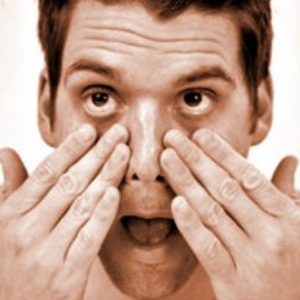
Why do your eyes look the way they do?
April 20, 2015
 There are a surprising number of different factors that can influence how your eye region looks and some of these causes such as life style choices maybe expected, yet other influencing reasons such as genetic are not so well publicized but just as instrumental.
There are a surprising number of different factors that can influence how your eye region looks and some of these causes such as life style choices maybe expected, yet other influencing reasons such as genetic are not so well publicized but just as instrumental.
Genetics
It seems that droopy eyes can be due to genetics and if you are wondering whether you are going to develop large fat pads under your eyes as you get older, take a look at your parents and see how their eyes are looking to get a glimpse into the future.
If the observations of a number of dermatologists are to be believed, the most common cause of sagging eyelids is your genetic makeup, although other lifestyle factors might also play their part in the process as well.
Swelling
There are a number of people who turn to specialists to address their sagging eyelid problems and swelling of the tissues around the eyes is also a common occurrence that causes anxiety to some of us who suffer from this.
Cosmetic surgery is just one of the solutions that people seek out and there are certainly things that you can do to improve the situation before you decide to go under the knife.
Swelling is known as periorbital puffiness and this is something that can happen to us, irrespective of our age or gender.
Significant factors that contribute towards swelling of the tissues around the eyes include a high-salt diet, excessive sleeping and high levels of alcohol intake.
It should be noted however, that the protrusion of intraorbital fat (the swelling of your lower eyelid fat) has generally been attributed to the natural aging process more than anything else.
Other risk factors
Sagging under-eye skin is more prevalent in certain groups of people than others and not just down to genetics.
Your age, being male rather than female and having a lighter skin tone are also likely to play their part and increase your risk-factor levels of suffering from sagging under-eye skin.
Having a higher than average Body Mass Index (BMI) will typically lead to having more accumulated fat and this is another issue that increases your odds of having larger and more protruding under-eye fat pads.
Susceptible to damage
Consider that the skin around your eyes is actually the thinnest skin on your whole body and is therefore much more susceptible to damage as a result of this vulnerability.
Your eye area is under attack from the regular flow of fluids from your eyes and the actions involved in applying makeup on a regular basis.
Puffy eyes
Puffiness has a long list of causes including seasonal allergies. One of the natural ways to try and combat the problem of puffy eyes is to balance out your levels of sodium.
Understanding osmosis will help you to think about the effect on your body when water moves from areas with low levels of salt to areas with a higher concentration level.
An extra-large intake of salt from a snack or meal with a high sodium content, will cause your body to over-compensate and lead to puffy eyes.
Even your sleeping position can be a contributory factor. If you happen to sleep on your side or your stomach, this could cause fluids to pool in your eyes.
You can often tell if this is the case when you regularly sleep on just one side of your body and notice that you have a higher level of puffiness around the eye as a result.
Dark circles
Many of us associate dark circles with tiredness, but there are a lot more reasons than just a lack of sleep that can cause us to suffer from dark circles.
It can be down to genetics, as some of us are born with a vulnerability to dark circles and pigmentation of the skin also plays a role, especially for those of us who are from African and Asian descent.
Age certainly plays its part in producing dark circles and as our skin thins as we get older, this exposes the area under your eyes even more than when we were younger.
Getting old is certainly part of the problem when we suffer from dark circles and other issues, but there are actually a lot more reasons and some of them like diet and lifestyle, can be addressed to reduce the impact of the problem.
Knowing the root cause of your under eye issues is the first step in treating them.




